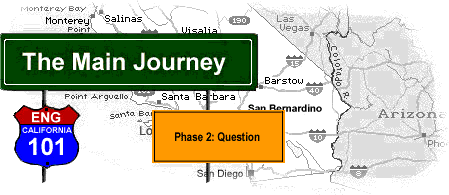 |
 |
| What is a question? |
You already know the importance of asking questions. Every day, you
routinely ask questions to learn directions to a friend's house, to
find the best restaurant to eat pancakes, or to get a better idea what
your boss wants you to do at work. In terms of writing a research paper,
a question can be a helpful device to further narrow your topic. A
question helps you pinpoint a particular concern you want to investigate.
For instance, consider once again the topic "amateur mountain climbing on Mt. Everest." One student might be interested in researching the fairness of prohibiting amateur climbers on Mt. Everest. That student would pose the following question: "Should amateur mountain climbers be prohibited from climbing Mt. Everest?" Another student might be more interested in the practicality of prohibiting amateur mountain climbers: "How would amateur mountain climbers be stopped from climbing Mt. Everest?" A much different paper would result from each question. Begin now by generating a list of potential questions for your research paper. | |||||||||||
| Examples of questions | Here are some other questions developed from a
different topic, "The effect of anti-gang laws on non-gang youth."
| |||||||||||
| Any questions or comments for Kenn? | ||||||||||||
| Where do I go next?
Go to "Assignment 2A" to develop a list of potential questions. | ||||||||||||
| Web Architect: Michael L. Geiger
Content by Kenn Pierson Created 2.2.98 - ©2000 M.L.Geiger URL: www.kjpierson.com/TEACHING/ENG101 |